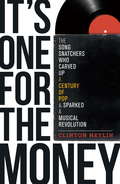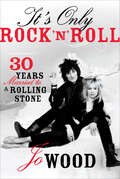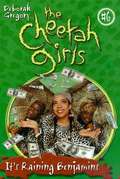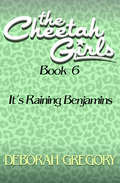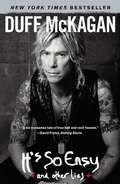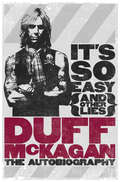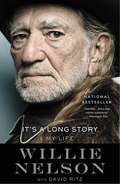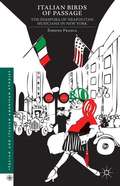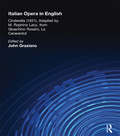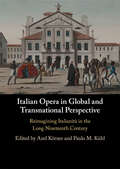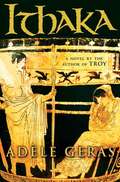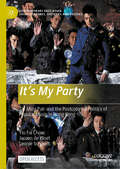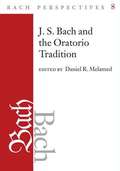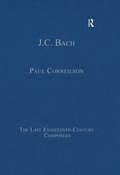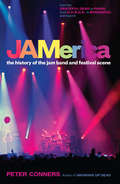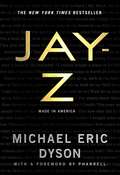- Table View
- List View
It's No Secret: From Nas to Jay-Z, from Seduction to Scandal--a Hip-Hop Helen of Troy Tells All
by Carmen BryanAn exclusive behind-the-scenes look at life in the rap world, from the woman at the heart of the Nas/Jay-Z feud—one of the biggest beefs in hip-hop.Carmen Bryan is no stranger to the rap world. Not only did she work at Def Jam and Capitol Records but she shares a daughter with hip-hop superstar Nas—a relationship made extremely public through Nas's celebrity status, rap lyrics, and the ever-present media. Now, in It's No Secret, a strong, resilient Carmen bares all, telling her side of the story and leaving no detail unturned—with the true candor and raw emotion of someone who has been there, done that, and survived. From a clandestine relationship with Nas's biggest rival, Jay-Z, that stirred up the biggest feud in hip-hop history, to seeing her reputation in tatters and a once loving relationship with Nas fall apart, Carmen depicts her trying journey to become the strong woman and mother she is today. After years of turmoil that included drugs, sex, greed, and violence—and abandoning what she had always prized above all, her freedom—Carmen took a stand, focusing on herself. After years of pursuit by the media, Carmen sets the record straight in It's No Secret—and has no regrets.
It's One For The Money
by Clinton HeylinSong publishing is the one constant in the carousel of recorded music now spanning the past century, and has been the way that song-credits and publishing revenue have caused ructions and recriminations, and inspired writers by making them poor and lawyers rich. Whether it be Procul Harum going to court to decide who really wrote ‘Whiter Shade of Pale’ or the Moody Blues wanting their fair share of ‘Nights of White Satin’, when the song-credits get divvied up, a parting of the ways citing ‘musical differences’ is almost inevitable. So here are some choice examples of poplore held up to the light,some familiar to music fans others not, designed to prove that Dylan knew of what he wrote when he suggested, ‘Money doesn’t talk, it swears’. Between them, they provide the unvarnished story of popular song from the days jukeboxes and radio replaced wax cylinders and piano rolls to the era of digital downloads, legal and illegal...
It's Only Rock 'n' Roll: Thirty Years Married to a Rolling Stone
by Jo WoodIn this wild, behind-the-scenes portrait of one of the biggest rock bands in history, Jo Wood comes clean about her three decades as the girlfriend and eventually the wife of Rolling Stones guitarist Ronnie Wood. This startlingly honest, laugh-out-loud memoir vividly describes life on tour, in the studio, at the legendary parties—and every raucous moment in between. From teenage model to hard-partying rock 'n' roll devotee, through motherhood, marriage, breakdown, and the challenge of starting over again, Jo Wood has had a roller-coaster ride of a life. At the age of sixteen, Jo burst onto the British modeling scene and became a fixture at London's most glamorous parties. A few years later, just twenty-two years old and a single mom, she met Ronnie Wood and her life changed forever. Holding nothing back, Jo paints an astonishing picture of the sex, drugs, booze, groupies, and—above all—the fun that filled her thirty years as a member of the Stones' inner circle. Telling never-before-heard stories about what life on the road with the Stones was really like, she offers intimate portraits of the band's legendary cast of characters, including Mick Jagger, Keith Richards, Jerry Hall, and Patti Hansen. She recalls the excitement of getting to know international A-list celebrities like Kate Moss, Andy Warhol, Johnny Depp, and Slash. Jo also opens up about her family life with Ronnie: their passionate love affair, the demands of being a mother by day and a wild child by night, and eventually coping with Ronnie's increasingly difficult behavior as his addictions consumed him. For the first time, she reveals her heartbreaking account of what happened when Ronnie left her for an eighteen-year-old waitress, explaining how she was able to forgive, live without bitterness or regret, and find new happiness as an entrepreneur and organic beauty expert. Including never-before-seen photographs from Jo's personal collection, It's Only Rock 'n' Roll is a compelling piece of rock 'n' roll history from a woman with a backstage pass and front-row seat. Enchanting, candid, and moving, this page-turning fairy tale of fame and fortune has the best of the era's many euphoric and reckless moments within its pages.
It's Raining Benjamins (Cheetah Girls #6)
by Deborah GregoryNow that the record company is going to give them a test single deal, Chanel and Galleria duke it out for control of the group. They both want to be the group's queen diva, while the rest of the Cheetah Girls just want them to compromise. Even though there's only room for one in the spotlight, Chanel and Galleria come up with a solution that lets both of them shine. Soon it's raining Benjamins - and cash comes falling from the sky!
It's Raining Benjamins: It's Raining Benjamins (The Cheetah Girls #6)
by Deborah GregoryNow that the record company is going to give the Cheetah Girls a test single deal, Chanel and Galleria duke it out for control of the group. At last they compromise and write a new song together, &“It&’s Raining Benjamins.&”
It's So Easy
by Duff MckaganA founding member of Guns N' Roses and Velvet Revolver shares the story of his rise to the pinnacle of fame and fortune, his struggles with alcoholism and drug addiction, his personal crash and burn, and his phoenix-like transformation via a unique path to sobriety. In 1984, at the age of twenty, Duff McKagan left his native Seattle--partly to pursue music but mainly to get away from a host of heroin overdoses then decimating his closest group of friends in the local punk scene. In L.A. only a few weeks and still living in his car, he answered a want ad for a bass player placed by someone who identified himself only as "Slash." Soon after, the most dangerous band in the world was born. Guns N' Roses went on to sell more than 100 million albums worldwide. In It's So Easy, Duff recounts GN'R's unlikely trajectory to a string of multiplatinum albums, sold-out stadium concerts, and global acclaim. But that kind of glory can take its toll, and it did--ultimately--on Duff, as well as on the band itself. As GN'R began to splinter, Duff felt that he himself was done, too. But his near death as a direct result of alcoholism proved to be his watershed, the turning point that led to his unique path to sobriety and the unexpected choices he has made for himself since. In a voice that is as honest as it is indelibly his own, Duff--one of rock's smartest and most articulate personalities--takes readers on his harrowing journey through the dark heart of one of the most notorious bands in rock-and-roll history and out the other side.
It's So Easy
by Duff MckaganIn his New York Times bestseller, Duff McKagan, founding member of Guns N' Roses and Velvet Revolver, shares the story of his rise to fame and fortune, his struggles with alcoholism and drug addiction, his personal crash and burn, and his life-saving transformation via a unique path to sobriety.In 1984, at the age of twenty, Duff McKagan left his native Seattle--partly to pursue music but mainly to get away from a host of heroin overdoses then decimating his closest group of friends in the local punk scene. In LA only a few weeks and still living in his car, he answered a want ad for a bass player placed by someone who identified himself only as "Slash." Soon after, the most dangerous band in the world was born. Guns N' Roses went on to sell more than 100 million albums worldwide. In It's So Easy, Duff recounts Guns' unlikely trajectory to a string of multiplatinum albums, sold-out stadium concerts, and global acclaim. But that kind of glory can take its toll, and it did--ultimately--on Duff, as well as on the band itself. As Guns began to splinter, Duff felt that he himself was done, too. But his near death as a direct result of alcoholism proved to be his watershed, the turning point that sent him on a unique path to sobriety and the unexpected choices he has made for himself since. In a voice that is as honest as it is indelibly his own, Duff--one of rock's smartest and most articulate personalities--takes readers on a harrowing journey through the dark heart of one of the most notorious bands in rock-and-roll history and out the other side.
It's So Easy (and other lies): The Autobiography
by Duff McKaganExplosive autobiography of Guns N' Roses and Velvet Revolver bass guitarist Duff McKaganDuff McKagan was a co-founder of Guns N' Roses, with a 13-year tenure on bass in what was at the time the biggest band on earth. As well as pulling together the classic line-up (Slash on guitar, Steven Adler on drums, rhythm guitarist Izzy Stradlin and vocalist Axl Rose), Duff was the unofficial musical director of the band and the most experienced musician, and played bass, drums and guitar, as well as co-writing many of the songs. Over the years, Guns N' Roses have broken many records in rock history - APPETITE FOR DESTRUCTION is the most successful debut album in the history of recorded music; the band's 1991 records, USE YOUR ILLUSION parts 1 and 2, debuted at one and two on the album charts, a feat never achieve before or since; and their 28-month ILLUSION world tour is still the longest running concert tour in history.Duff charts the rise of the group, and his own fall, as with success came heavy drinking and drug use, culminating in his hospitalisation for acute pancreatitis in 1994. Forced to sober up, Duff started taking an interest in business, eventually completing a degree in economics and making a killing on the stock market. He has since worked with Slash in another band, Velvet Revolver, and has continued to play with various artists over the last 15 years.IT'S SO EASY (AND OTHER LIES) is the explosive memoir of a great rock musician who, against the odds, has lived to tell the tale.
It's So Easy: and other lies
by Duff MckaganIn his New York Times bestseller, Duff McKagan, founding member of Guns N' Roses and Velvet Revolver, shares the story of his rise to fame and fortune, his struggles with alcoholism and drug addiction, his personal crash and burn, and his life-saving transformation via a unique path to sobriety.In 1984, at the age of twenty, Duff McKagan left his native Seattle--partly to pursue music but mainly to get away from a host of heroin overdoses then decimating his closest group of friends in the local punk scene. In LA only a few weeks and still living in his car, he answered a want ad for a bass player placed by someone who identified himself only as "Slash." Soon after, the most dangerous band in the world was born. Guns N' Roses went on to sell more than 100 million albums worldwide. In It's So Easy, Duff recounts Guns' unlikely trajectory to a string of multiplatinum albums, sold-out stadium concerts, and global acclaim. But that kind of glory can take its toll, and it did--ultimately--on Duff, as well as on the band itself. As Guns began to splinter, Duff felt that he himself was done, too. But his near death as a direct result of alcoholism proved to be his watershed, the turning point that sent him on a unique path to sobriety and the unexpected choices he has made for himself since. In a voice that is as honest as it is indelibly his own, Duff--one of rock's smartest and most articulate personalities--takes readers on a harrowing journey through the dark heart of one of the most notorious bands in rock-and-roll history and out the other side.
It's a Long Story: My Life
by David Ritz Willie NelsonThe definitive autobiography of Willie Nelson "Unvarnished. Funny. Leaving no stone unturned." . . . So say the publishers about this book I've written. What I say is that this is the story of my life, told as clear as a Texas sky and in the same rhythm that I lived it. It's a story of restlessness and the purity of the moment and living right. Of my childhood in Abbott, Texas, to the Pacific Northwest, from Nashville to Hawaii and all the way back again. Of selling vacuum cleaners and encyclopedias while hosting radio shows and writing song after song, hoping to strike gold. It's a story of true love, wild times, best friends, and barrooms, with a musical sound track ripping right through it. My life gets lived on the road, at home, and on the road again, tried and true, and I've written it all down from my heart to yours. Signed,Willie Nelson
Italian Birds of Passage
by Simona FrascaMore than any other regional repertoire, Neapolitan song defined the Italian popular music tradition. From international celebrities like Enrico Caruso to the most middling small-town vedette, Neapolitan musicians transcended local identity and attracted new audiences by abandoning the operatic tendencies of Italian song, introducing new subjects, and embracing new musical trends like the foxtrot, blues, and tango. In this way, they helped to create one of the first modern examples of a truly transnational musical style. This lively history spans the years from Italian unification to the fascist regime of the early twentieth century to trace the transformation of songs written in regional dialect into a wildly popular art form recognized around the world. As author Simona Frasca shows, the Neapolitan song tradition benefited from serendipitous historical circumstances: although they were forced to join the mass migration of Italians to New York and other American urban centres between 1880 and 1920, Neapolitan musicians managed to maintain strong ties with the art form's origins in Italy. By marrying a strong sense of tradition with an openness to new forms, these musicians helped to present a distinct form of 'Italianness' to the world even as they participated, along with other ethnic groups, to the production of 'American' identity.
Italian Jewish Musicians and Composers under Fascism: Let Our Music Be Played (Italian and Italian American Studies)
by Alessandro Carrieri Annalisa CapristoThis book is the first collection of multi-disciplinary research on the experience of Italian-Jewish musicians and composers in Fascist Italy. Drawing together seven diverse essays from both established and emerging scholars across a range of fields, this book examines multiple aspects of this neglected period of music history, including the marginalization and expulsion of Jewish musicians and composers from Italian theatres and conservatories after the 1938–39 Race Laws, and their subsequent exile and persecution. Using a variety of critical perspectives and innovative methodological approaches, these essays reconstruct and analyze the impact that the Italian Race Laws and Fascist Italy’s musical relations with Nazi Germany had on the lives and works of Italian Jewish composers from 1933 to 1945. These original contributions on relatively unresearched aspects of historical musicology offer new insight into the relationship between the Fascist regime and music.
Italian Opera in English: Cinderella, Adapted by M. Rophino Lacy, 1831, from Gioachino Rossini, La Cenerentol (Nineteenth-Century American Musical Theater Series #No. 3)
by M. Rophino LacyFirst Published in 1994. This is volume 3 of a 16-volume series providing comprehensive set of works from a full century of musical theatre in the United States of America. The work in this volume represents Italian opera in English though the works have British origins and strong French influences. This volume discusses various operatic interpretations of the Cinderella story, from its French operatic debut in 1810 to the most famous operas from Perrault and Rossini.
Italian Opera in Global and Transnational Perspective: Reimagining Italianità in the Long Nineteenth Century
by Axel Körner Paulo M. KühlThis volume of essays discusses the European and global expansion of Italian opera and the significance of this process for debates on opera at home in Italy. Covering different parts of Europe, the Americas, Southeast and East Asia, it investigates the impact of transnational musical exchanges on notions of national identity associated with the production and reception of Italian opera across the world. As a consequence of these exchanges between composers, impresarios, musicians and audiences, ideas of operatic Italianness (italianità) constantly changed and had to be reconfigured, reflecting the radically transformative experience of time and space that throughout the nineteenth century turned opera into a global aesthetic commodity. The book opens with a substantial introduction discussing key concepts in cross-disciplinary perspective and concludes with an epilogue relating its findings to different historiographical trends in transnational opera studies.
Ithaka
by Adele GerasThe island of Ithaka is overrun with uncouth suitors demanding that Penelope choose a new husband, as she patiently awaits the return of Odysseus from the Trojan War.
Itzhak A Boy Who Loved the Violin: A Boy Who Loved The Violin
by Tracy NewmanItzhak Perlman was infected with polio at the age of four and despite this he went on to become an acclaimed violinist.
It’s My Party: Tat Ming Pair and the Postcolonial Politics of Popular Music in Hong Kong (Contemporary East Asian Visual Cultures, Societies and Politics)
by Jeroen de Kloet Yiu Fai Chow Leonie SchmidtThis book is unique in focusing on just one band from one city – but the story of Tat Ming Pair, in so many ways, is the story of Hong Kong's recent decades, from the Handover to the Umbrella Movement to 2019's standoff. A comprehensive, theoretically informed study of the sonic history and present of Hong Kong through the prism of Tat Ming Pair, this book will be of interest to cultural studies scholars, scholars of Hong Kong, and those who study the arts in East Asia.This is an open access book.
J. S. Bach (Dover Books on Music #1)
by Albert Schweitzer Ernest Newman C. M. WidorA fantastic little book about Bach and the musical climate before and during his life, with a look at his continuing influence in music. Many of the earliest books, particularly those dating back to the 1900s and before, are now extremely scarce and increasingly expensive. We are republishing these classic works in affordable, high quality, modern editions, using the original text and artwork.
J. S. Bach and the Oratorio Tradition: Bach Perspectives, Volume 8
by Daniel R. MelamedAs the official publication of the American Bach Society, Bach Perspectives has pioneered new areas of research in the life, times, and music of Bach since its first appearance in 1995. Volume 8 of Bach Perspectives emphasizes the place of Bach's oratorios in their repertorial context. These essays consider Bach's oratorios from a variety of perspectives: in relation to models, antecedents, and contemporary trends; from the point of view of musical and textual types; and from analytical vantage points including links with instrumental music and theology. Christoph Wolff suggests the possibility that Bach's three festive works for Christmas, Easter, and Ascension Day form a coherent group linked by liturgy, chronology, and genre. Daniel R. Melamed considers the many ways in which Bach's passion music was influenced by the famous poetic passion of Barthold Heinrich Brockes. Markus Rathey examines the construction and role of oratorio movements that combine chorales and poetic texts (chorale tropes). Kerala Snyder shows the connections between Bach's Christmas Oratorio and one of its models, Buxtehude's Abendmusiken spread over many evenings. Laurence Dreyfus argues that Bach thought instrumentally in the composition of his passions at the expense of certain aspects of the text. And Eric Chafe demonstrates the contemporary theological background of Bach's Ascension Oratorio and its musical realization
J. S. Bach: A Life In Music
by Peter WilliamsA fresh approach to the life and music of Johann Sebastian Bach.
J. S. Bach: The Complete Cantatas
by Richard Stokes Martin NearyIn Lutheran Germany in the 17th and 18th centuries, Sunday church services were five hours long. There would be prayers, liturgy, communion, an hour-long sermon, congregational hymn singing and a 15- to 25-minute "cantata" composed of chorus, vocal solos, and a hymn. These are sometimes referred to as "sermons in music." For a period of five years from 1723 to 1728 Johann Sebastian Bach wrote one of these cantatas almost every week. Sadly, almost 100 of these are lost. Bach's roughly 210 surviving cantatas are a major component of the western musical canon. This book contains their texts and English translations along with those for the Christmas and Easter oratorios. These surviving cantatas contain approximately 245 soprano arias, 223 alto arias, 249 tenor arias, 259 bass arias, many duets, a few trios and a couple of quartets. And all of them are inspired and inspiring. For this Bookshare edition, DAISY markup is provided so that each cantata title is at level 1 and each cantata movement is at level 2. To search for a particular cantata, type BWV, a space, its number, and another space. Each movement is presented fully in its original language (usually German) and then in English translation. To search for a particular movement (Sheep May Safely Graze, for example) which is the ninth movement of Cantata 208, type 208.9. Or to find the text of Jesu, Joy of Man's Desiring which is the sixth movement of Cantata 147, type 147.6. To quote Bach about music, its only purpose "is the praise of God and the recreation of the soul." Using a music service to which you subscribe or YouTube, ask it to play Bach Cantata 1 or Bach Cantata 51 or Bach Cantata 140 and see if you feel these works of music accomplish their composer's objective for you. For a sense of Bach's humor, ask your music service or YouTube to play Bach Cantata 211 (the Coffee Cantata) or Bach Cantata 212 (the Peasant Cantata). For instrumentation of all the cantatas and their individual movements, see the web site bach-cantatas.com because instrumentation is not included in this book. That site also provides commentary and translations into several other languages as these works continue to have worldwide interest.
J. S. Bach: Volume 2
by Albert Schweitzer Ernest Newman C. M. WidorThis is the second volume of Schweitzer's classic book about J. S. Bach. It covers Schweitzer's revolutionary (for its time) idea that Bach used a musical lexicon to relate words in the score with themes in the music for the Cantatas and most of his other music. It also presents much more detail than Vol. 1 does on the proper way to play Bach's music. The level of musical terminology is high, but the insights are profound nevertheless. It also includes the index for both volumes as well as a list of Bach's music as known at that time (1911).
J.C. Bach
by Paul CorneilsonThis volume of essays brings together the best of recent scholarship on Johann Christian Bach, the youngest son of J.S. Bach and a friend and mentor of Mozart. J.C. Bach had a cosmopolitan career, beginning in Berlin as a pupil of his half-brother, C.P.E. Bach, then a sojourn to Italy where he studied with Padre Martini in Bologna; after making his successful debut with operas for Turin and Naples he moved to London, where he became a leading composer and impresario. The articles selected for this volume represent the principal themes of scholarly research and writing over the past fifty years. The introduction provides a survey of J.C. Bach‘s career and an overview of recent literature. The collection includes English translations of two articles first published in German in the Bach-Jahrbuch, as well as one article published as recently as 2015. An appendix lists the complete contents of The Collected Works of Johann Christian Bach, using the Warburton catalogue numbers.
JAMerica: The History of the Jam Band and Festival Scene
by Peter ConnersThe term "jam band" is used to categorize a type of music that favors improvisation and musicianship over concise riffs, hooks, and traditional songwriting structure. The term also helps define the fiercely dedicated fans of the music as accurately as it does the bands. Much as with the Grateful Dead-the progenitors of the jam band scene-the survival of the scene depends upon a symbiotic relationship with fans. Jam bands nurture a close relationship with their fans, fostered through constant touring and the mutual belief that each performance is a unique, shared event.JAMerica tells the story of the roots, evolution, values, and passion of the jam band scene in the words of those who know it best. Modeling itself on such books as Edie: American Girl by George Plimpton and Jean Stein (an oral history of the life of Edie Sedgewick ) and Please Kill Me: The Uncensored Oral History of Punk by Legs McNeil and Gillian McCain, the book is an oral history of the jam band scene, integrating stories from such bands as the Grateful Dead, Phish, Widespread Panic, Dave Matthews Band, moe., Leftover Salmon, String Cheese Incident, Umphrey's McGee, and dozens more. Interviews focus on the history of individual bands and how they communally shaped the larger jam band community, along with songwriting, relationships with fans, business models, and the importance (including the joys and war stories) of touring, including early gigs and venues (e.g. the Wetlands in New York City and the landmark H.O.R.D.E. Festival) that supported the emergence of the jam band scene.
JAY-Z: Made in America
by Michael Dyson"Dyson's incisive analysis of JAY-Z's brilliance not only offers a brief history of hip-hop's critical place in American culture, but also hints at how we can best move forward." —Questlove <P><P>JAY-Z: Made in America is the fruit of Michael Eric Dyson’s decade of teaching the work of one of the greatest poets this nation has produced, as gifted a wordsmith as Walt Whitman, Robert Frost and Rita Dove. But as a rapper, he’s sometimes not given the credit he deserves for just how great an artist he’s been for so long. <P><P>This book wrestles with the biggest themes of JAY-Z's career, including hustling, and it recognizes the way that he’s always weaved politics into his music, making important statements about race, criminal justice, black wealth and social injustice. As he enters his fifties, and to mark his thirty years as a recording artist, this is the perfect time to take a look at JAY-Z’s career and his role in making this nation what it is today. In many ways, this is JAY-Z’s America as much as it’s Pelosi’s America, or Trump’s America, or Martin Luther King’s America. JAY-Z has given this country a language to think with and words to live by. <P><P>Featuring a Foreword by Pharrell <P><P><b> A New York Times Bestseller </b>

